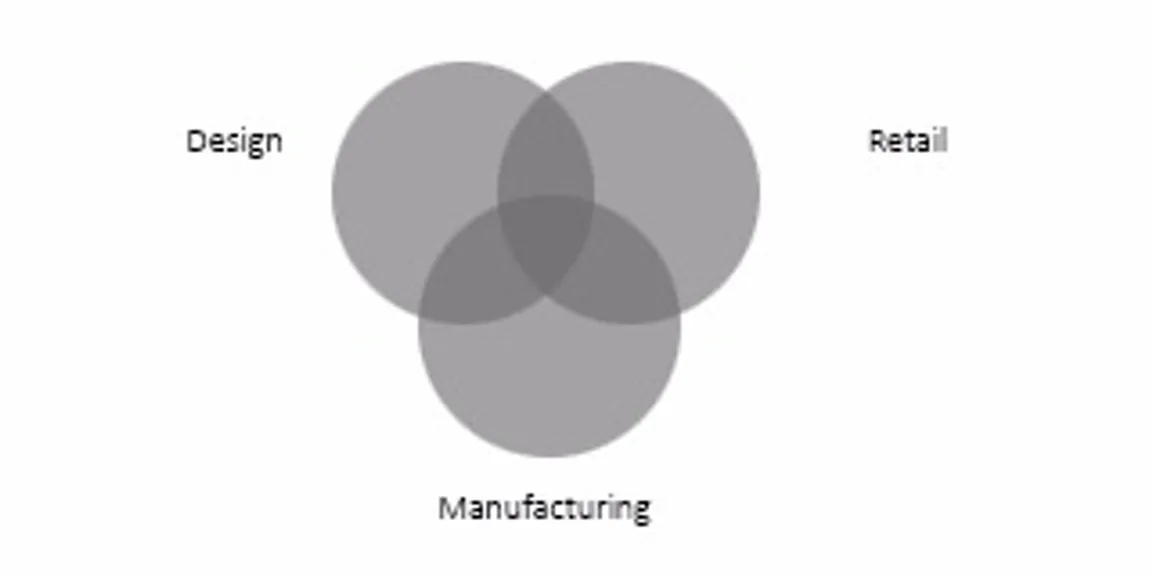

How can budding designers succeed in India?
The understanding of the three sectors of all Businesses and their skewed dominance in our country can help designers succeed commercially while following their passion.
I am a product designer and design researcher working at a one of its kind problem solving outfit in Mumbai. After my masters in Product Design from NID Ahmedabad, I was lucky to spend 2 years in Germany. While the carefree artist in me found his juices flowing well in Berlin (HTW Berlin, freelance projects and workshops), the practical designer and craftsman in me found solace at one of the oldest Industrial Design studios in Munich.
Post my German designapades, I moved to Mumbai in 2015, to join a multi-disciplinary design studio, with some of the most talented, diverse and experienced creative minds of the country. Amidst diverse projects across corporate, social and startup sector, I got to travel to more than 12 cities within India, and a couple of cities in China. Thanks to the exclusivity brought by the founders of my workplace, I've been fortunate to work with the top business minds of the country on one side, and top-notch creative talent on the other. The journey has been fun, exciting and full of creative opportunities.
Today I want to share something I learnt during an intense discussion with Mr. Darshan Mehta, CEO of Reliance Brands, while understanding certain aspects of their business. Mr Mehta has had years of experience in the fashion sector, and most certainly knows how to distil his knowledge into simple terms and models.
Most businesses and brands, as he explains, need to figure out three spaces, namely Design, Manufacturing and Retail. While most focus on one domain more, a few end up balancing all three on their own. To give an example, he spoke of Zara, which gets its own designers to design affordable fashion with consumer understanding, only to be manufactured in-house, and then exclusively retailed at Zara stores. The closest in owning all three spaces is Apple, with a fixed manufacturing partner and dedicated i-stores. Most other players, big or small, focus more on 1 or maximum 2 of the 3. You would find a Levis jeans in a Levis store, but you'd also find it at a generic clothing store like Brand Factory. A lot of production for brands is outsourced to other countries, with limited or no control on manufacturing methods.

The trichotomy of sectors in all businesses
Pondering over this tracheotomy, I realized how the three countries I have lived and worked in, have their businesses focused on one each, Design, Manufacturing and Retail. Germany, and in general Europe, has inherent understanding of Design, and rarely do businesses there neglect the value Design brings. Most of the German brands, hence, are world-leaders in design. Starting from Siemens, Agfa and Grass on the industrial end, to Audi, BMW and Mercedes in automotive, all hail from Germany.
The second sector, Manufacturing, as we all know, has been owned by the Chinese now, leaving the world with a lot of catching up to do. With both finesse in quality and cost-effective methods, the Chinese have mastered the art of 'making', and that too in huge numbers. Be it Vivo, Oppo or Xiaomi on one side, or the unbranded stuff available on Alibaba on the other, their businesses are there to profit from the margins of manufacturing more than the brand value themselves.
India, having followed the US Model of consumerism, and with a big potential market, becomes the automatic Retail hub for the world, where once business gets easier, most of the world would want to come and sell. So much so, that there's hardly any focus on both Design and Manufacturing. As long as it sells, it doesn't matter what it is, and where and how it's made. The very reason why advertising (and not design) has been the differentiation across competitors.
This clarity of where India as a market focuses, brought me clarity to how designers should go about their work, be it creating new projects, briefs, design directions, execution processes or problems they are trying to solve.
Pure-play design is understood by the Indian layman, only as jugaad. The attributes of form, function, ergonomics, and design-detailing are things people have learnt to live without, and take for granted (as my colleague Neha noted). As long as stuff works, a little pain is worth it. We as a country don't have the time to get into the nitty-gritties, because forever are we queued up to reach somewhere, hurrying our ways into banks, hospitals and airports. No wonder, we all stand up immediately once the plane lands, zombying our way to reach the luggage belts.
The consumerist economy thrives on user experience and interface, the front end of the product experience, which starts from retail, and sustains to usage and disposal. This again tells us why, advertising, UI/UX are budding fields of the creative sector.
So how can an industrial designer/communication designer/ film maker or artist, retain his creative juices and passion thriving on one end, while balancing out the practicality of survival on the other? How do they not move to the convincing world of UI/UX or advertising and figure ways to build their professions the way they want to?

The skewed trichotomy in the Indian context
The answer lies in marrying Retail to whatever you do. If your core is product design, and the stuff you design includes consumer insights turned into great solutions, understand how its packaging might be a bigger game-changer than the idea itself. Do justice to your idea, but let it be packaged even better, so it becomes something that sells. "Idea toh badiya hai magar market mein ye nahi chalta sahab", is a line we've all heard from the marketing and sales teams of clients. Is it the costumer you didn't understand, or is it the retailer instead?
The buyer might agree to your design, but so does the seller? A great toy isn't one that the kid will love to play with, unless it's packaged in a way that the mother would buy it in the first place. The mother-shopkeeper interaction is one that needs as much focus as does the psychologist's understanding of kid's concept of fun. Why does the mother pick up a bigger bat for a small kid, or buy puzzles that she can't solve herself, in place of the demands made by her son? The insights stem from the way retail spaces are designed, how retailers (conventional as well as modern) talk to consumers, and the nature of choices available during the sale.
Once one understands the stake of the Retailer as the biggest stakeholder in the system design of our country, things get a lot easier. If you've put x amount of energy and time in the design of a new and innovative product or service, add an extra x amount of effort to design its presence at the retail sector. Most great ideas are never made and used in India, because the seller doesn't approve of them.
So the next time you go to buy a shampoo, groceries or doing your daily errands, make it a point to talk to the kirana wala, subzi wala, barber or the chemist, and ask him why he sells what he sells, and what makes him decide his list of products and services. His psyche is much more important in the context of design for India, a veto power we better have on our side!

The best businesses of the future in India, will be the ones who understand this tracheotomy and try to achieve mastery in all three within the country itself. However, till we reach the maturity of valuing design and manufacturing, we need to stay connected globally and work together with the best of designers and craftsmen internationally, to ensure that great ideas get designed well, manufactured brilliantly and sold effectively to finally attain their purpose, of being used by the end-consumer to solve problems!


